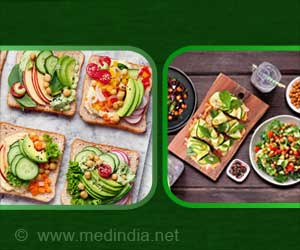If a child with nonalcoholic fatty liver disease (NAFLD) consumes a very low amount of sugars in their diet, both fat and inflammation in the liver improves, revealed study.

‘NAFLD is associated with increased risk of type 2 diabetes, end-stage liver disease, liver cancer and cardiovascular disease, thus diagnosis and prompt treatment is very important to long-term health.’





NAFLD is the most common liver disease in children, and it significantly increased from 1988 to 2010. "Although pediatric guidelines for managing non-alcoholic fatty liver disease recommend a healthy diet, focused reduction of sugary foods and beverages was an unproven treatment," says Vos. "Our results show that if a child with NAFLD consumes a very low amount of sugars in their diet, both fat and inflammation in the liver improves. We are excited by the highly significant results but also realize that a longer study will be needed in order to understand if sugar reduction is sufficient to "cure" NAFLD."
The clinical study, conducted from August 2015 to July 2017, included 40 boys ages 11 to 16 years with NAFLD, 95 percent of whom were Hispanic. The participants were randomized into two groups. Half the boys, along with their families, were provided a diet low in free sugars (less than three percent of daily caloric intake), and half ate their usual diets. Twice-weekly telephone calls assessed adherence to the diet. Reducing free sugars in the diet involves decreasing glucose, fructose, and sucrose commonly consumed in sweetened foods and beverages and in naturally sweet fruit juices.
The primary outcome measured was change in hepatic steatosis, estimated by magnetic resonance imaging proton density fat fraction measurement - a precise, state-of-the-art method to quantify lipids in liver. Twelve secondary outcomes also were measured, with several having significant changes as well. The decrease in alanine aminotransferase level (a test used to measure liver enzymes and liver function) was significantly greater for the intervention diet group than for the usual diet group, and decrease in cholesterol levels was significantly greater in the intervention group. In addition, adherence to the diet was high, with 18 of 20 participants/families reporting intake of fewer than three percent of calories from free sugar during the intervention. There were no adverse events related to participation in the study.
"Despite the counseling provided by physicians to patients and families, implementing an effective sugar-reducing diet, along with long-term adherence and sustainability are often very challenging," notes Schwimmer. "Our study shows that children and their families can follow a diet low in free sugars for up to eight weeks when the research team plans, purchases and provides all meals. Although this would not be widely practical, it shows that this kind of intervention reduces NAFLD biomarkers at least in the short term."
Advertisement
Source-Eurekalert















